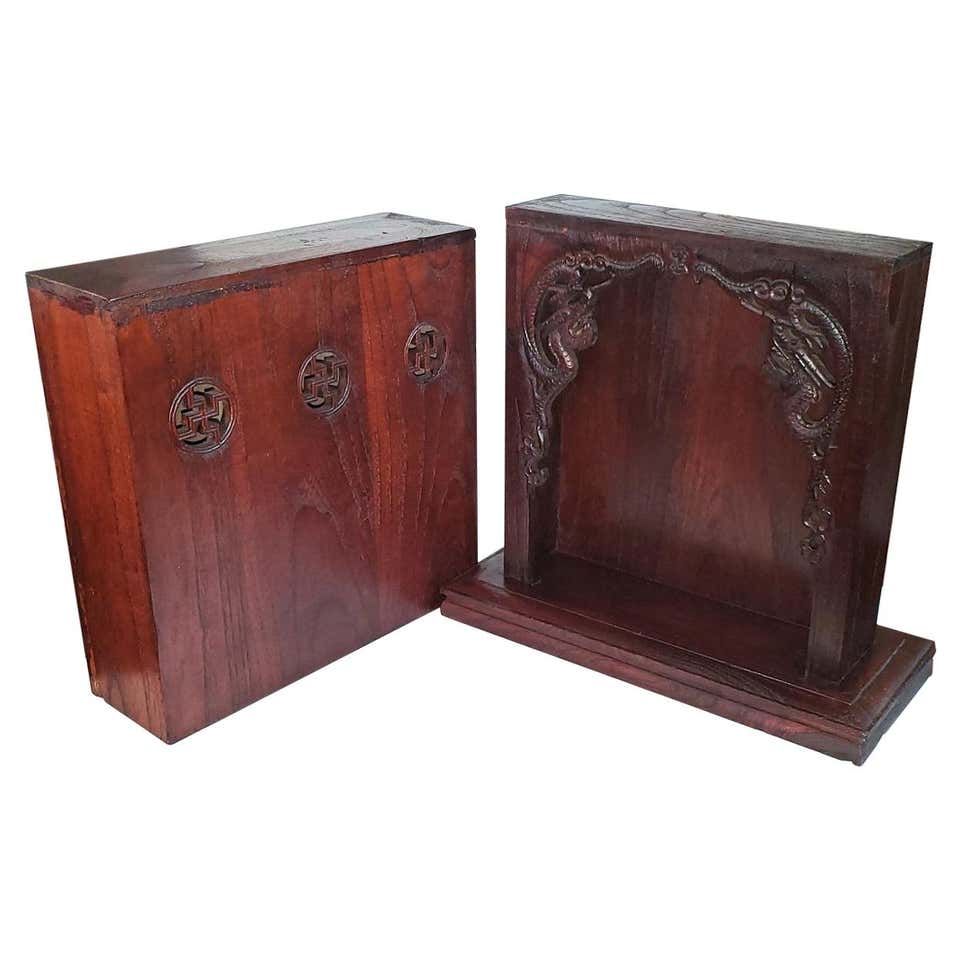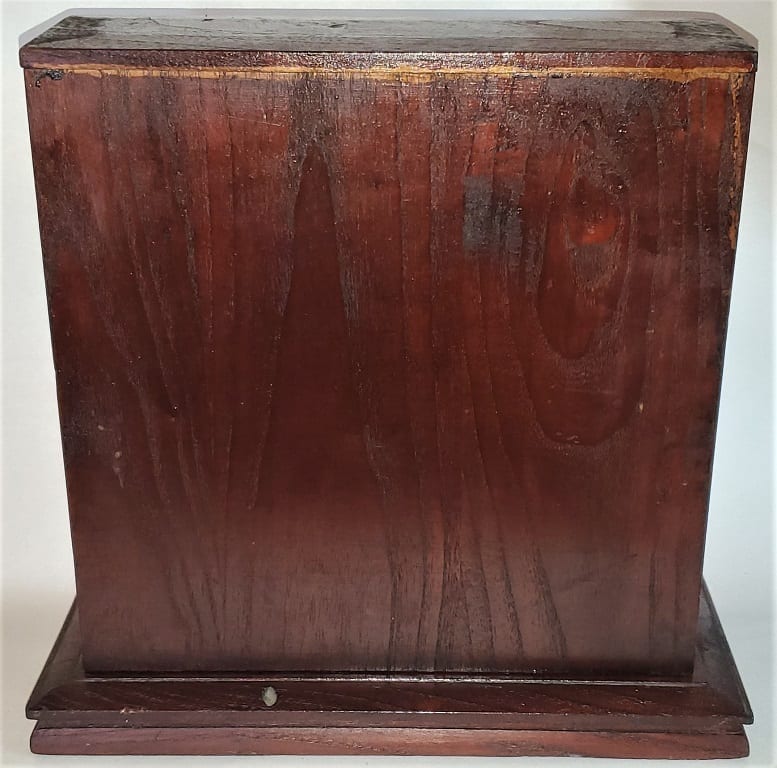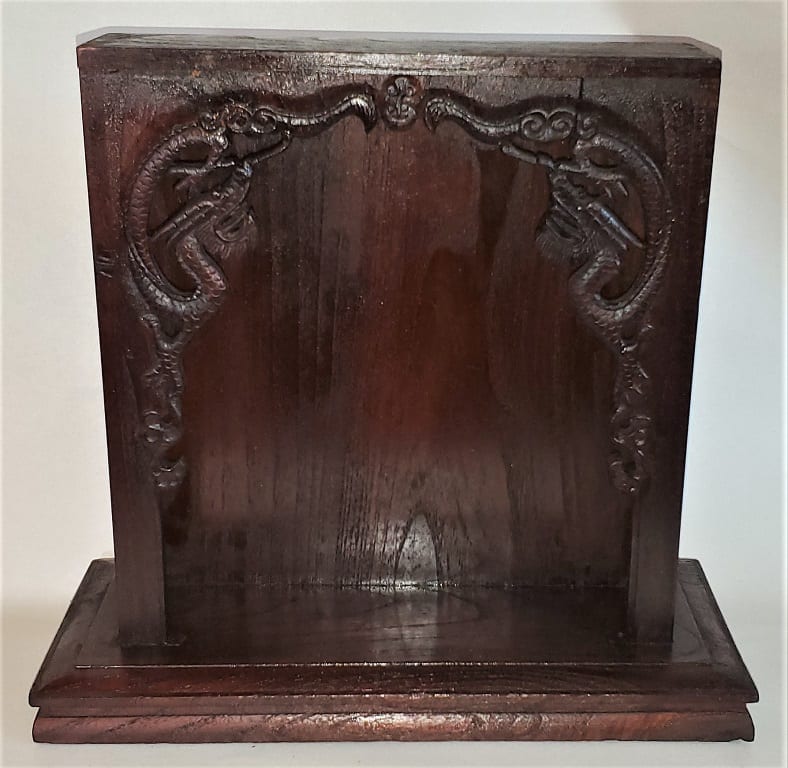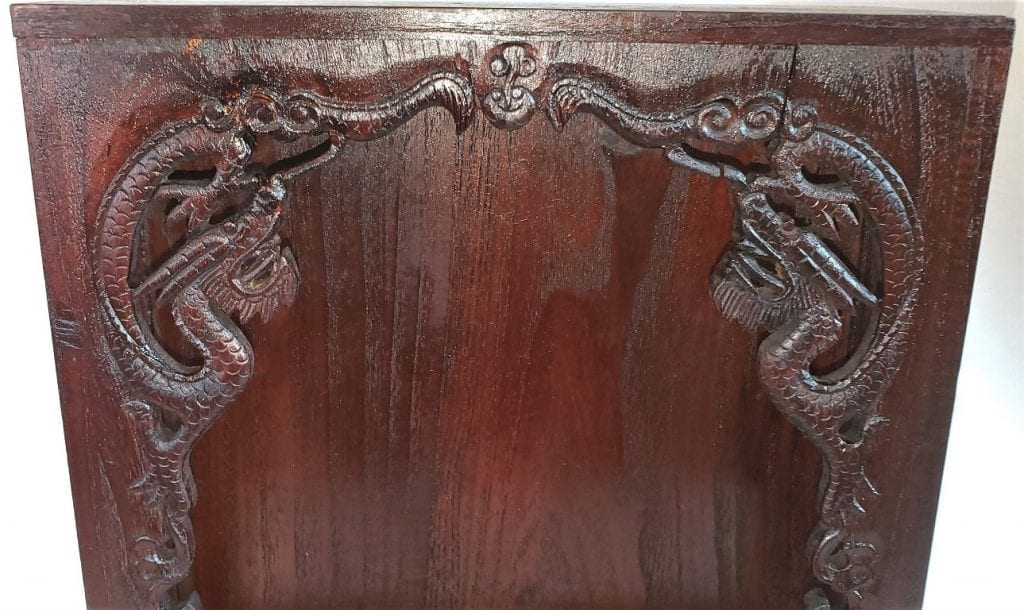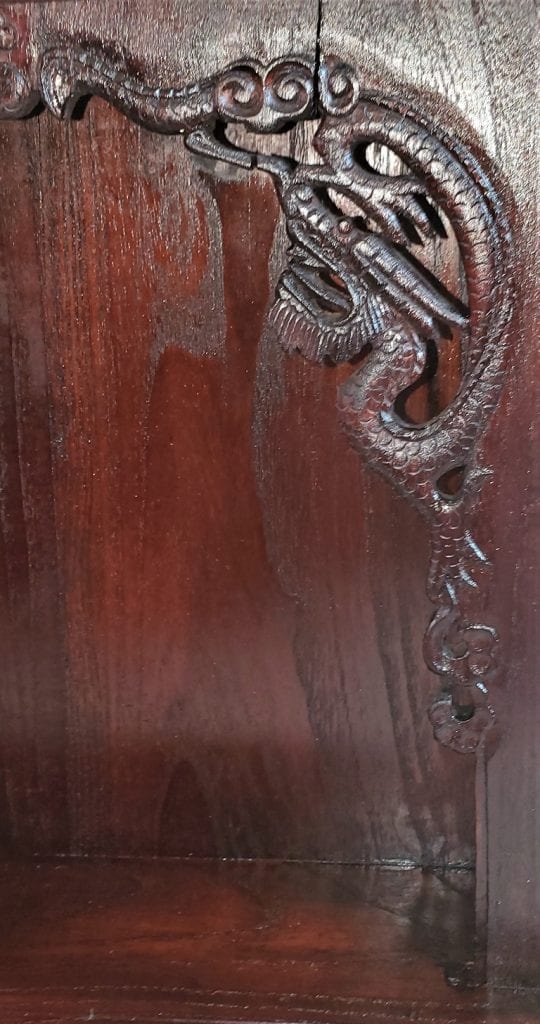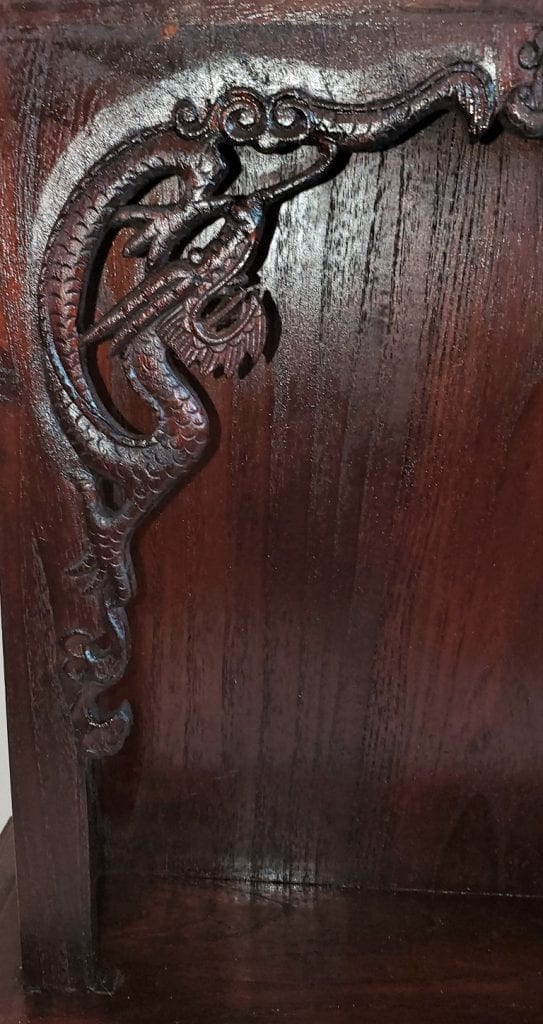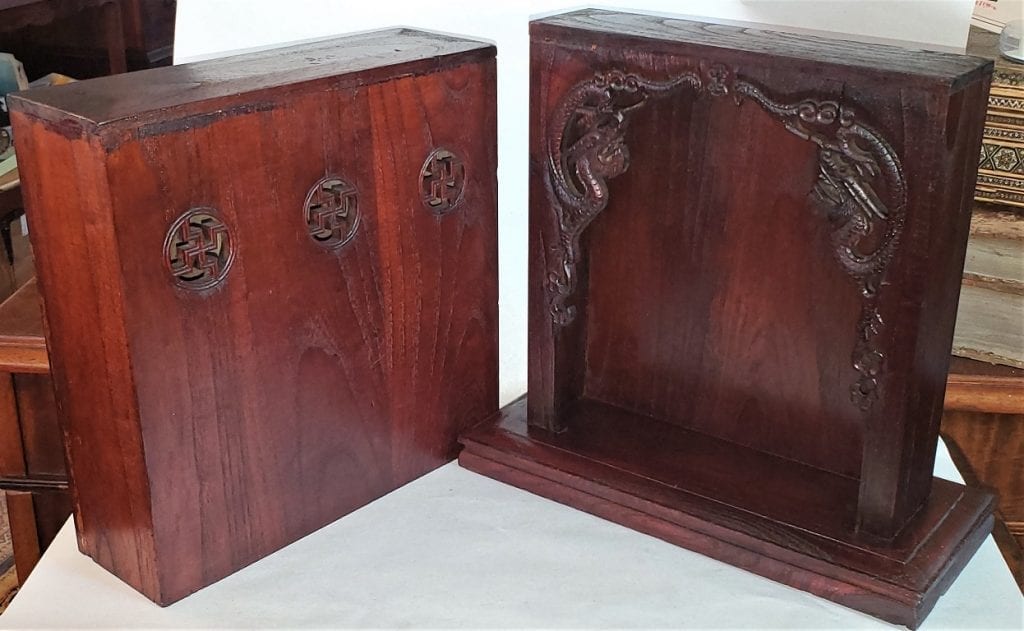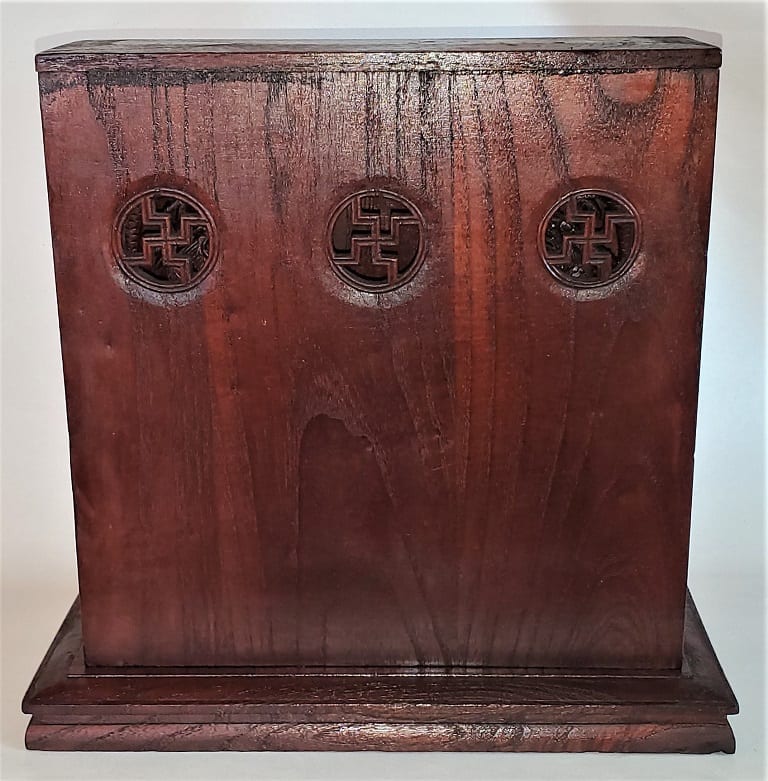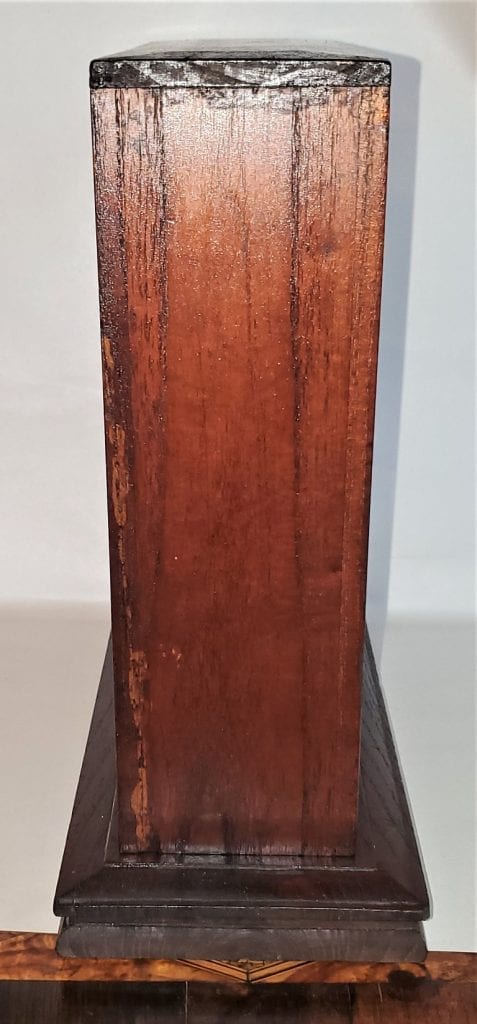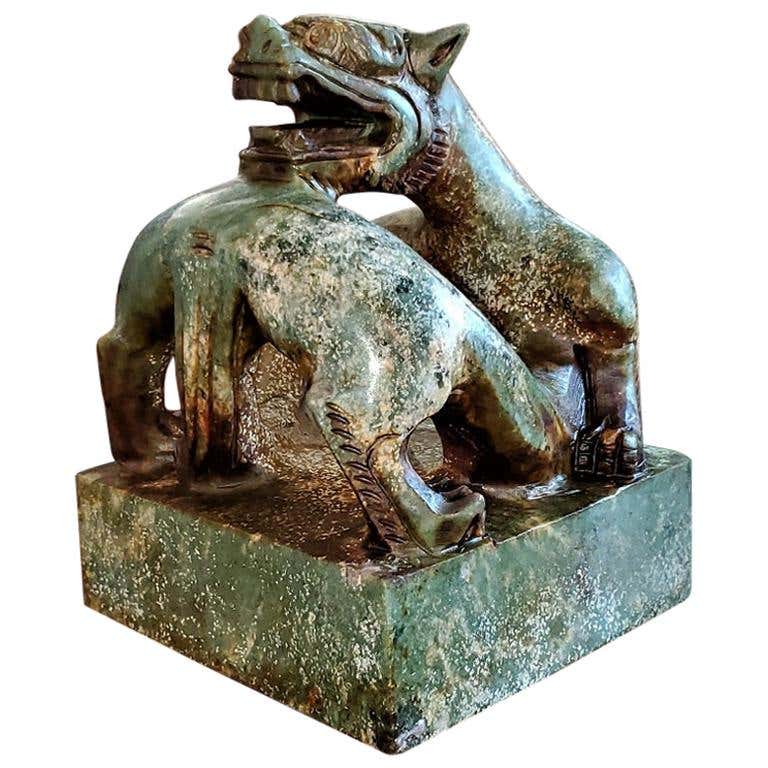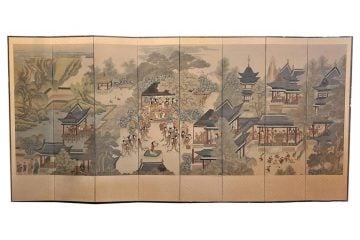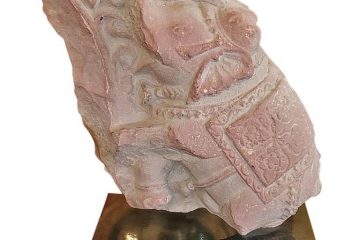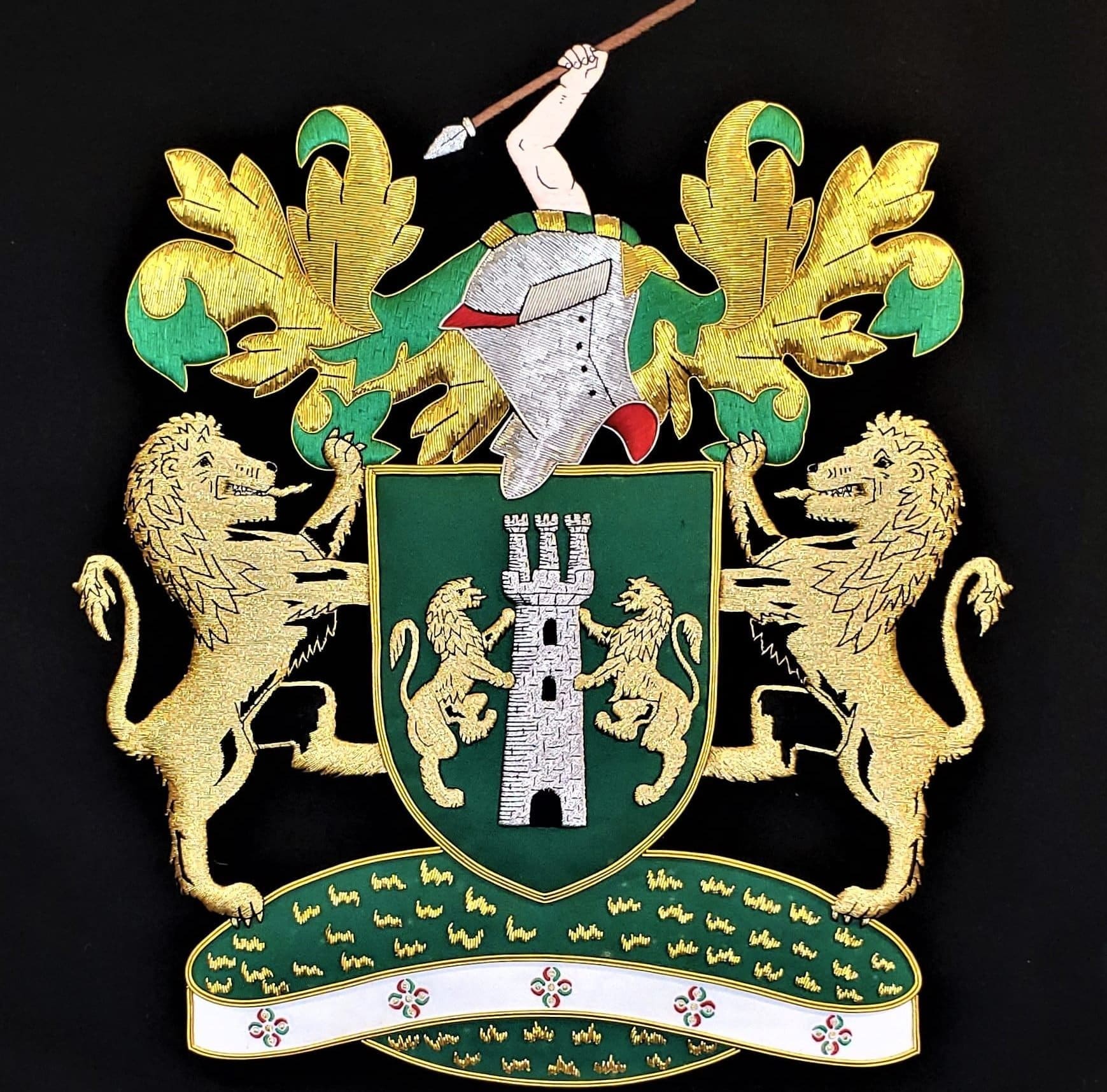Vintage Japanese Temple Style Box
PRESENTING A LOVELY Vintage Japanese Temple Style Box.
Made of rosewood, this box has a cover featuring ‘Buddhist Swastikas’ on the front.
The cover lifts off to reveal a tabernacle with 2 carved dragons on wither side.
Probably made in the first quarter of the 20th Century, circa 1920-30.
Rectangular shaped for the storage of deities statues or treasures within.
On an attached wooden plinth or base. One single piece.
A really nice and unusual box of medium proportions.
Bought by a Dallas Private Collector whilst on a trip to Japan in the 1970’s.
Buddhist temples, or Buddhist monasteries together with Shinto shrines, are considered to be amongst the most numerous, famous, and important religious buildings in Japan. The shogunates or leaders of Japan have made it a priority to update and rebuild Buddhist temples since the Momoyama period.
The Japanese word for a Buddhist temple is tera (寺) (kun reading), and the same kanji also has the pronunciation ji (on reading), so that temple names frequently end in -dera or -ji. Another ending, -in (院), is normally used to refer to minor temples. Such famous temples as Kiyomizu-dera, Enryaku-ji, and Kōtoku-in are temples which use the described naming pattern. The Japanese word for a Buddhist temple Tera (寺) was anciently also written phonetically 天良 tera, and is cognate with the Modern Korean Chǒl from Middle Korean Tiel, the Jurchen Taira and the reconstructed Old Chinese *dɘiaʁ, all meaning “Buddhist Monastery”. These words are apparently derived from the Aramaic word for “Monastery” dērā/ dairā/ dēr (from the root dwr “to live together”), rather than from the unrelated and later Indian word for monastery vihara, and may have been transmitted by the first Central Asian translators of Buddhist scriptures, such as An Shigao or Lokaksema.
Link: https://en.wikipedia.org/wiki/Buddhist_temples_in_Japan
The swastika or sauwastika (as a character, 卐 or 卍, respectively) is a geometrical figure and an ancient religious icon in the cultures of Eurasia. It is used as a symbol of divinity and spirituality in Indian religions.
In the Western world, it was a symbol of auspiciousness and good luck until the 1930s, when it became a feature of Nazi symbolism as an emblem of Aryan identity. As a result of World War II and the Holocaust, most people in Europe and the Americas associate it with Nazism and antisemitism.
The word swastika comes from Sanskrit (Devanagari: स्वस्तिक) meaning ‘conducive to well being’ or ‘auspicious’. In Hinduism, the symbol with arms pointing clockwise (卐) is called swastika, symbolizing surya (‘sun’), prosperity and good luck, while the counterclockwise symbol (卍) is called sauvastika, symbolizing night or tantric aspects of Kali. In Jainism, a swastika is the symbol for Suparshvanatha – the seventh of 24 Tirthankaras (spiritual teachers and saviours), while in Buddhism it symbolizes the auspicious footprints of the Buddha. In several major Indo-European religions, the swastika symbolizes lightning bolts, representing the thunder god and the king of the gods, such as Indra in Vedic Hinduism, Zeus in the ancient Greek religion, Jupiter in the ancient Roman religion, and Thor in the ancient Germanic religion.
The swastika is an icon which is widely found in both human history and the modern world. In various forms, it is otherwise known (in various European languages) as the fylfot, gammadion, tetraskelion, or cross cramponnée (a term in Anglo-Norman heraldry); German: Hakenkreuz; French: croix gammée. In China it is named wàn 卐 / 卍 / 萬, meaning ‘all things’, pronounced manji in Japanese. A swastika generally takes the form of a cross, the arms of which are of equal length and perpendicular to the adjacent arms, each bent midway at a right angle. The symbol is found in the archeological remains of the Indus Valley Civilization and Mesopotamia, as well as in early Byzantine and Christian artwork.
The swastika was adopted by several organizations in pre–World War I Europe, and later by the Nazi Party and Nazi Germany before World War II. It was used by the Nazi Party to symbolize German nationalistic pride. To Jews and the enemies of Nazi Germany, it became a symbol of antisemitism and terror. In many Western countries, the swastika is viewed as a symbol of racial supremacism and intimidation because of its association with Nazism. Reverence for the swastika symbol in Asian cultures, in contrast to the West’s stigmatization of the symbol, has led to misinterpretations and misunderstandings.
Link: https://en.wikipedia.org/wiki/Swastika
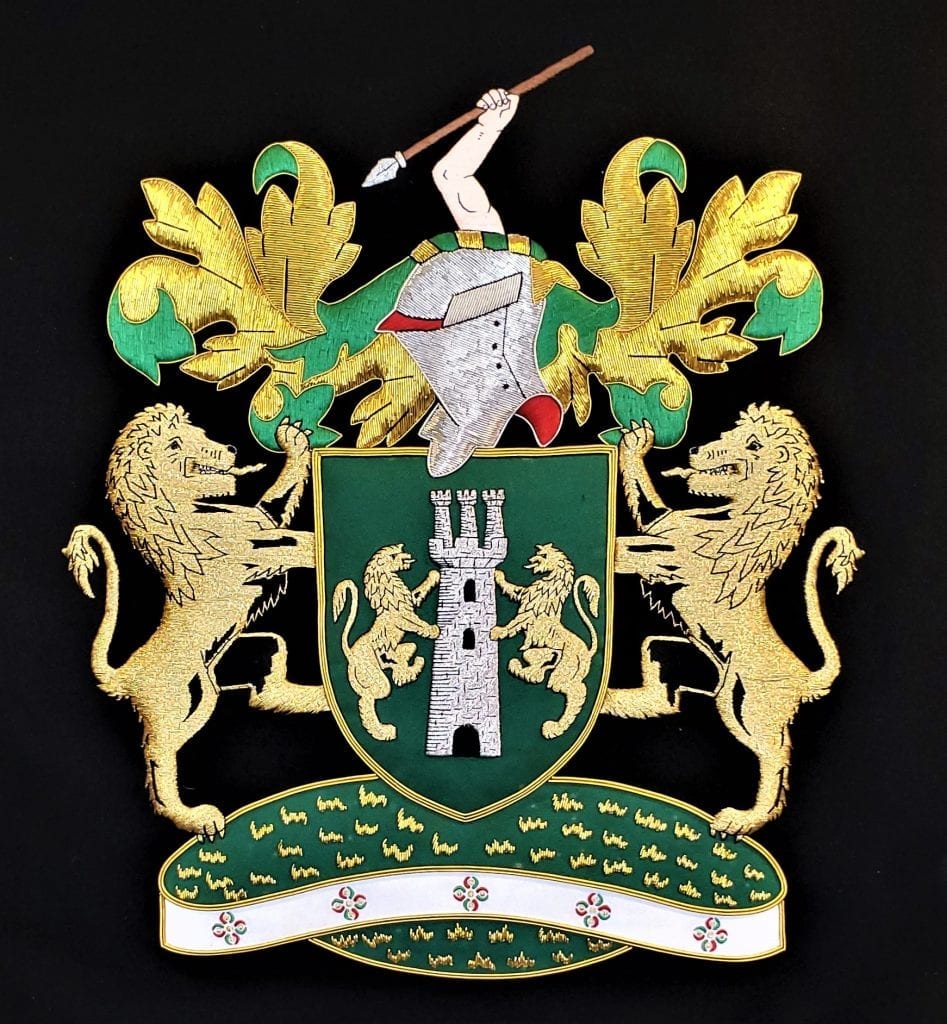

Vintage Japanese Temple Style Box.
Provenance: From a Private Dallas Collection.
Condition: Very Good for it’s age and use.
Dimensions: 13 inches Tall, 13.5 inches Wide and 5.75 inches Deep
SALE PRICE NOW: $340
